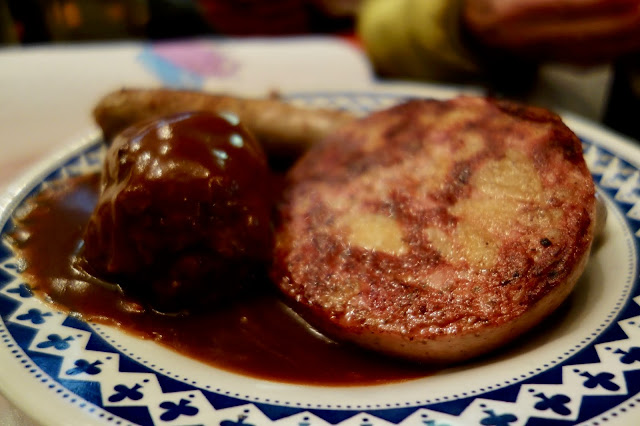Oxford, UK: What a University Town!
The first thing you notice when you get to Oxford is that it’s a stone city. Massively stone. Fortress stone. And there is a castle here, built by one of William the Conqueror ‘s Barons. The university is the town and the town is the university. The vast stonewalls of the colleges spread throughout the city, with businesses and pubs fitting in where they can.
English poet, Matthew Arnold dubbed it, the “City of dreaming spires.” Yes, spires and towers across the city skyline.
Places to see:
TheAshmolean Museum (for art and archaeology ) Don’t you dare miss it! Ancient Egyptian and Roman/Greek displays are extraordinary!
Christ Church Cathedral and the great hall, which was the inspiration for the fictional dining room of Hogwarts (Harry Potter).
The Alice sweet shop, where Alice Liddell shopped for candy. Alice, a family friend of Charles Dodgson (Lewis Carroll) and his inspiration for Alice in Wonderland.
Blackwell’s Books, perhaps the finest bookshop I’ve ever been in.
The Bodleian Library (known as Bodly or The Bod), it’s mainly a research library and each college has its own library.
The Martyr’s Memorial, memorializing three protestant bishops burned alive for their faith by the Catholic Queen Mary.
The Eagle and Child pub (sometimes called The Bird and Baby), where authors known as the “inklings,” including C.S. Lewis and J.R.R. Tolkien (Lord of the Rings) met for pints and discussion.
But, since this is a university town, let’s chat about that a moment. There are 38 Colleges and six more Permanent Private Halls (PPHs) that form Oxford University. Walk down any street and you’ll pass several, their high sandstone walls and picturesque inner courtyards more like fortresses than colleges. The earliest are Balliol and Merton, founded in 1249 and 1264. Even earlier colleges are no longer in existence.
What is the difference between the colleges and the Permanent Private Halls (PPHs)? The colleges are run by the “Fellows” (professors) of the college, while the PPHs are run by various Christian denominations.
Many of the colleges may be visited during specifically posted hours.
If Balliol and Merton are the oldest, what’s the newest? Kellogg College, 1990. Two older colleges also combined into one in 2008.
No women allowed until 1878 and they couldn’t earn degrees until 1920. The last all male college began admitting women in 1974. Now personally, I think there’s a place for single sex education, both high school and higher. Of course, I’m prejudiced having graduated from all male schools. But, of course I also prefer big band music and abhor rap. Also, I use the word ‘gender,’ only under protest unless I’m speaking grammatically. So, I remain quite happily out of date.
Across the university, student population is about 12,000 for undergrads and the same number for graduate students. Acceptance rate is about 16% for undergraduate studies and about 21% for graduate studies. So that works out to less than 600 students per college or PPH. Note: There are a number of other colleges and universities in the city, but outside the Oxford University system, bringing the city's total student population to about 33,000. Note: The city's population is over 150,00.
Having taken three weeks of course work in Oxford during my younger, bolder (some say obnoxious) days, I love the Oxford system of education, built around reading, research, attending lectures of your choosing, and meeting with your personal tutor periodically to discuss your progress and map out directions for future study. It’s personal education at it’s best and the results speak for themselves, with so many notables having graduated from Oxford over the centuries, too numerous to name. Greatness abounds in every field of endeavor.
So how do the colleges and PPHs fit together to become Oxford University? Each of the colleges and PPHs are independently run. The University is responsible for libraries, labs, and exams. So, if you want to become a student, you apply to a specific college. Those are the basics.
Relations between the town and gowns has not always been amiable. It was in 1209 when students left to form Cambridge University. The most tragic rioting occurred in 1355, when two students got in an altercation with a tavern keeper, ending with the students tossing their drinks in his face. Word got out and the riot ended with 90 students and 30 townspeople killed. Wonder if that’s where the cheer, “Standup, Sit down, Fight, Fight, Fight came from.
For now, I’ll offer photos to give you an idea of the city of Oxford. By the way, the name Oxford, comes from Oxanforda, meaning a ford in the river where cattle could cross.
Go! Explore! Do not confine yourself to London! In future articles, I’ll take inside the Ashmolean Museum, Blackwell’s Books, famous Oxforions ancient pubs, and more!
Best Way to Discover Oxford: Hop-On-Hop- Off Bus 30 Pounds pp for 24 hours. Commentary provided in a host of languages.
How to get to Oxford: We flew into Heathrow, found our way to the airport’s Central Bus Station and bought round trip tickets straight to and from Oxford. Trip takes about an hour and a half to Oxford’s city center station. Couldn’t be easier!
Now, to win a bar bet: What is the oldest continually operating university in the world?
Karueein (859 A.D.), in Fez, Morocco. And in Europe? The University of Bologna, Italy (1088 A.D.)































